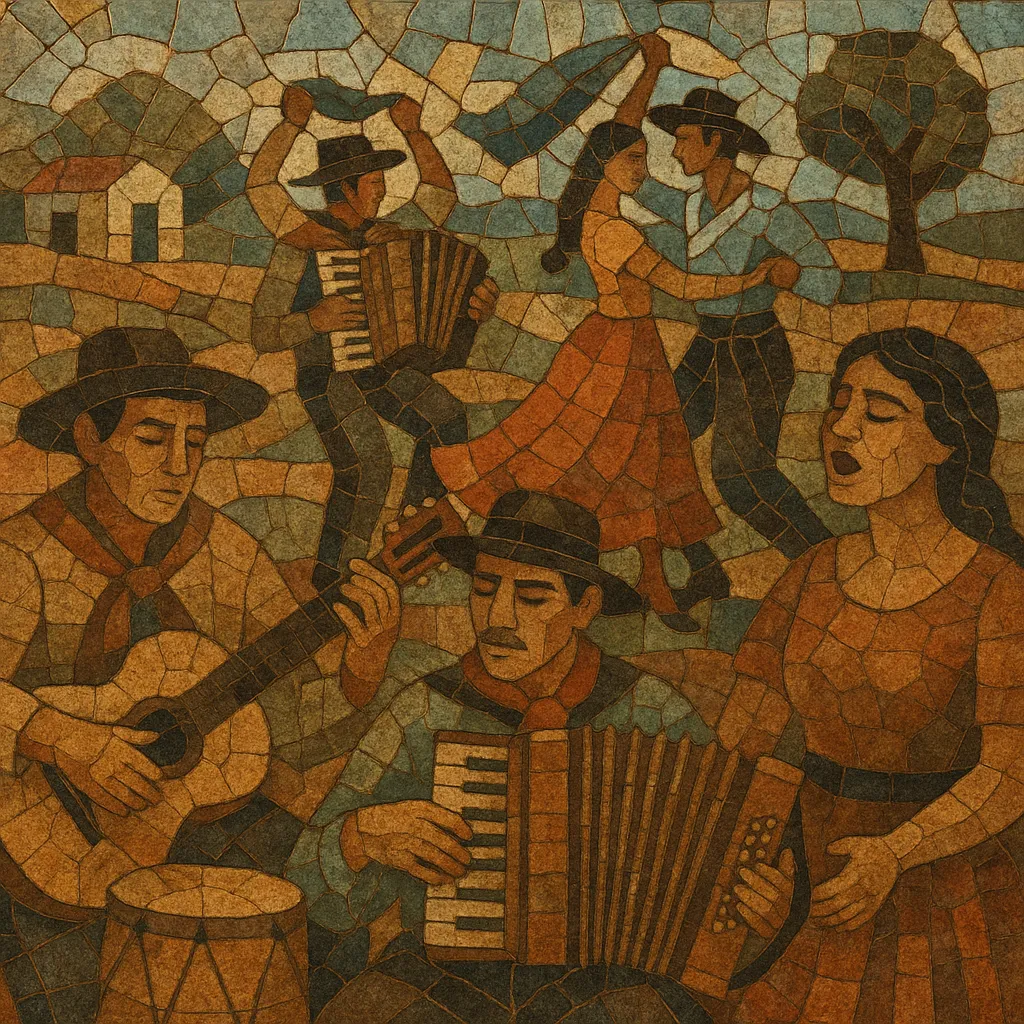Folklore argentino (música folklórica argentina) is the umbrella term for Argentina’s regional traditional music and song. It gathers styles such as chacarera and zamba from the Northwest, chamamé and rasguido doble from the Litoral, cueca and tonada cuyana from Cuyo, malambo and milonga pampeana from the Pampas, vidala and baguala from the Andean northwest, and many more.
While its roots stretch back to the colonial era and to indigenous traditions, the genre crystallized as a modern national repertoire during the mid‑20th‑century folkloric boom. It is marked by guitar-based accompaniment (rasgueado strumming), bombo legüero drum pulses, rich vocal traditions (solo and choral), and dance forms in compound meters with characteristic hemiolas. Themes often evoke the land, the gaucho, love and longing, community festivities, indigenous memory, and social justice.
Argentina’s folklore draws from a long confluence of indigenous musical practices (Quechua, Aymara, Mapuche, Guaraní and others), Iberian colonial song and dance (fandango, tonadas, coplas), and later European immigrant dances (polka, schottische, waltz). Rural life of the Pampas and Andean highlands nurtured genres like milonga pampeana, vidala/baguala (often accompanied by caja coplera) and cueca/zamba in characteristic 6/8–3/4 cross‑rhythms.
By the early 20th century, local variants had taken shape across regions (NW, Cuyo, Litoral, Patagonia). Payadores (improvising singers) and guitar duos helped codify forms, and printed collections and radio began circulating regional repertories to national audiences.
A mass revival in the 1950s turned regional traditions into a shared national repertoire. Festivals (notably Cosquín), radio, and LPs propelled artists such as Atahualpa Yupanqui, Los Chalchaleros, and Los Fronterizos. Composers/arrangers like Ariel Ramírez and Eduardo Falú formalized styles for concert settings, while ensembles standardized instrumentation (guitars, bombo legüero, violin/charango/accordion by region).
Folklore became a vehicle for social and political expression. The Nuevo Cancionero (Mendoza, 1963) and the broader Nueva Canción movement connected Argentine folklore with pan‑Latin currents, amplifying poetic, anti‑authoritarian, and indigenist themes. Mercedes Sosa’s voice carried folklore to global stages, even as censorship and exile marked the era.
From the 1990s onward, folklore argentino intersected with rock nacional, jazz, and electronic production, inspiring folk‑rock fusions, chamber folk, and folktronica. Regional festivals remain vital, new singer‑songwriters continue the poetic tradition, and styles like chamamé and chacarera thrive both in roots settings and modern crossovers.


